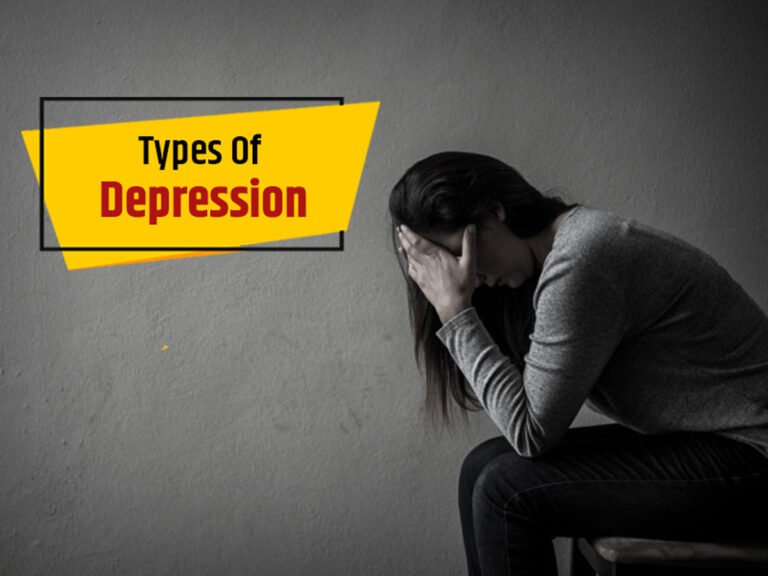Often misunderstood and underestimated, depression is not a singular affliction but a multifaceted spectrum of emotional and psychological challenges. Navigating through the fog of depression might feel daunting, but you’re not alone. Understanding these variations is your first step on the road to recovery.
Table of Contents
Understanding depression
Mental health depression is a disability condition that affects millions of people worldwide. There are various types of depression, each with its unique depressive symptoms, ranging from persistent sadness to a lack of interest in once enjoyable activities.
If these depression types and symptoms persist and interfere with daily life, it’s crucial to consult a mental health professional. They can diagnose a specific type of depression and suggest suitable treatments.
Sometimes, standard treatments don’t work, leading to treatment-resistant depression. In such cases, don’t lose hope. Many effective alternative therapies and strategies can still be explored, like brain stimulation therapy.
Common types of depression
Major depressive disorder
In your journey to understand depression, it’s vital to begin with clinical depression, also called major depressive disorder. This severe depression is characterized by persistent and intense feelings of sadness, hopelessness, and a lack of interest in activities once enjoyed.
Experiencing a major depressive episode means dealing with depression symptoms most of the day, nearly every day, for at least two weeks. These symptoms often include sleep disturbances, changes in appetite, difficulty concentrating, and even recurrent thoughts of death or suicide.
Persistent depressive disorder
If you think major depressive disorder is challenging, another type of major depression itself, called persistent depressive disorder, might also be a significant challenge.
This form of chronic depression also referred to as dysthymic disorder, is characterized by a persistent feeling of sadness or a lack of interest in outside stimuli. The world may seem ‘colorless and dull’ to those with this disorder.
You might feel depressed or hopeless or ‘down in the dumps.’ This emotion isn’t a fleeting feeling but a long-standing state of being. It may last at least two years and can significantly affect your daily activities, productivity, and overall quality of life.
Disruptive mood dysregulation disorder
You mightn’t know this, but there’s a type of depression called disruptive mood dysregulation disorder, which primarily affects children and adolescents. This severe form of depressive disorder can be distressing for both the child and those around them.
This mood disorder is characterized by intense temper tantrums and persistent irritability inconsistent with the child’s developmental age. It’s a relatively new classification in mental health, added to address the overdiagnosis and treatment of bipolar disorder in children.
The symptoms can be severe and disrupt daily life, challenging regular social interaction and academic progress.
Seasonal affective disorder
While your child might struggle with disruptive mood dysregulation disorder, it’s also possible for you to experience a different kind of psychotic depression known as seasonal affective disorder (SAD), typically marked by mood changes that coincide with the changing seasons.
This depression type manifests a seasonal pattern, usually surfacing in the colder, darker winter months and subsiding in the sunnier seasons. You might feel lethargic, tend to oversleep, crave carbohydrates, be in a depressed mood, and exhibit a general lack of interest in daily activities.
Thankfully, light therapy, a common treatment for SAD and bipolar depression, can help alleviate symptoms by mimicking sunlight and boosting mood. Don’t hesitate to seek mental health specialist help if you’re experiencing these symptoms.
Premenstrual dysphoric disorder
Premenstrual dysphoric disorder (PMDD) is another common type of depression. PMDD is characterized by severe mood swings, increased appetite, and weight gain, among other physical symptoms, that occur during the week or two before menstruation.
Unlike typical premenstrual syndrome, PMDD’s symptoms are so severe they can significantly interfere with your work, social activities, and relationships.
As with other types of mental disorders, treatment for PMDD is available and can greatly improve your quality of life. Don’t hesitate to seek professional help if you’re experiencing symptoms of PMDD.
Last words
It’s okay to feel lost but remember, dawn always follows the darkest hour. Your journey towards recovery, like a new day, is within reach. Life can feel manageable again, and you hold the power to seek that dawn. If you or someone you know is experiencing symptoms of depression, seeking help from a mental health professional is crucial to managing and overcoming this challenging condition.

